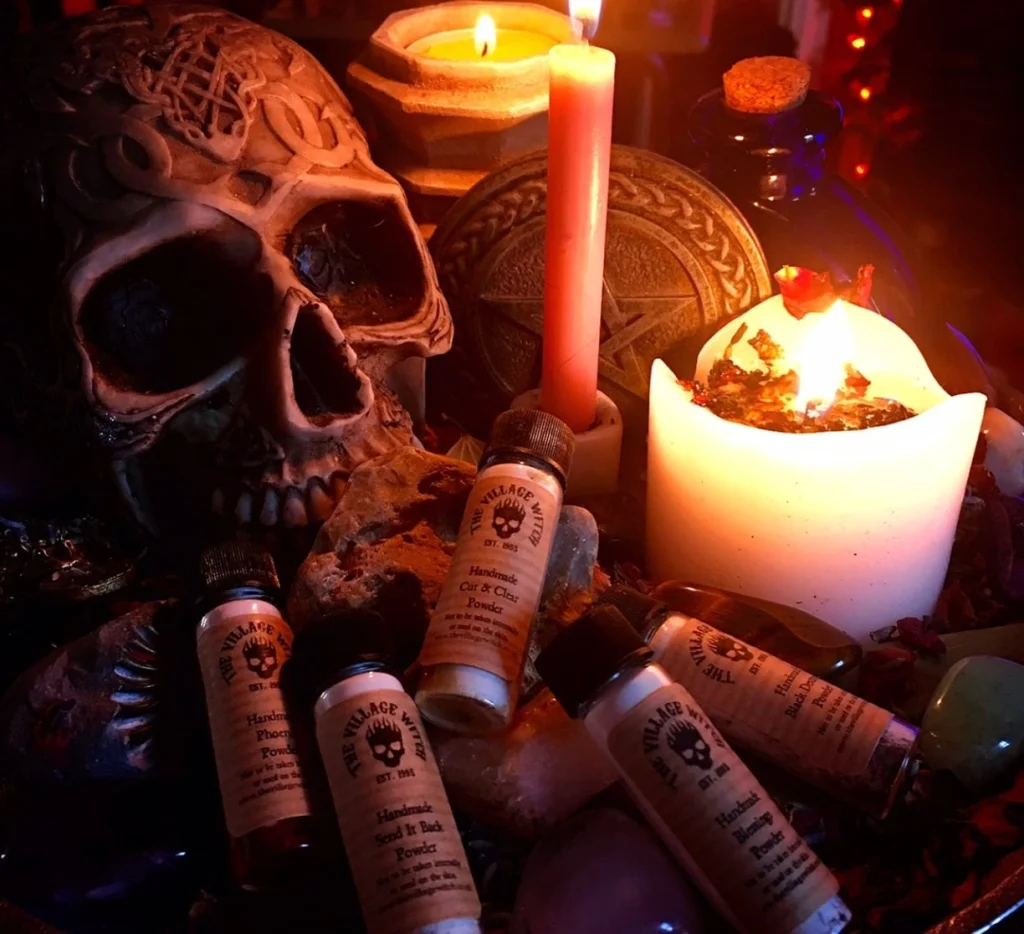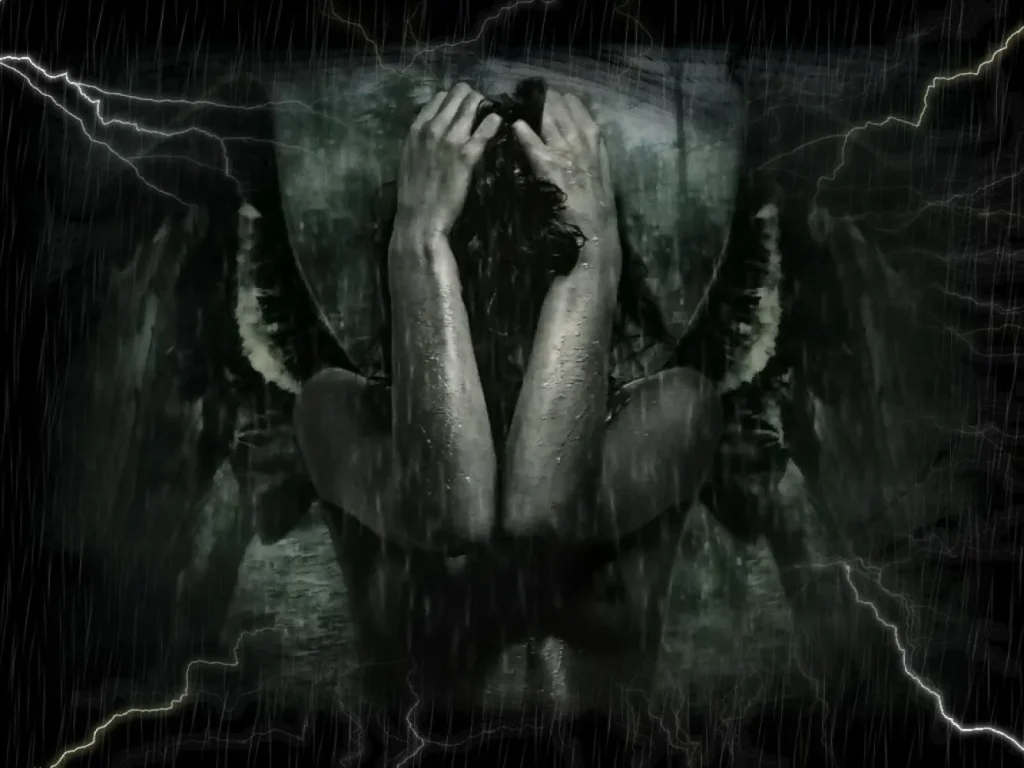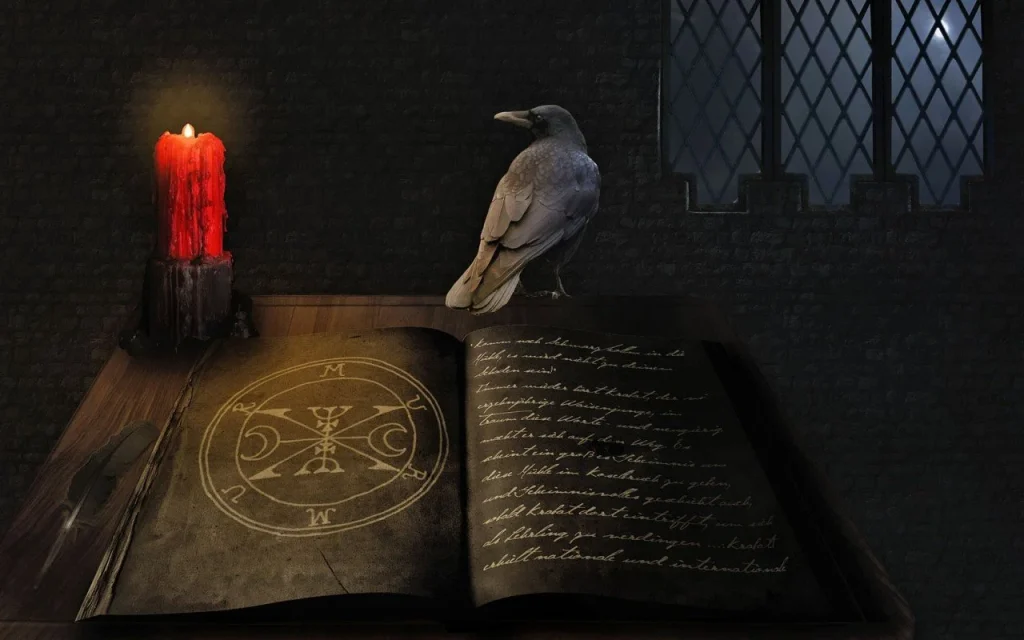Have you ever felt a chill down your spine at the mention of a curse or witnessed an inexplicable series of misfortunes and wondered if a hex might be at play? These ancient forms of dark magic have been a part of human folklore for centuries, casting shadows of fear and curiosity. In this article, we’ll explore the eerie world of hexes and curses, piercing through the veil of the unknown to discover their origins, techniques, and real-world applications—because, as some might attest, these esoteric spells are more than mere stories.
Hexes and Curses
- Hexes and curses are forms of dark magic that have been present in cultures around the world.
- They involve rituals and satanic symbols intended to invoke negative effects on a person or place.
- Ingredients and objects used in curses could range from herbs and candles to personal possessions of the intended target.
- Protective measures and counterspells are often sought to break or shield against such dark enchantments.
- Real stories and historical accounts offer chilling evidence of these practices in different societies.
A hex or curse is typically cast by someone wishing to inflict harm or misfortune upon another, although motives can vary widely from revenge to jealousy, or even for personal gain. In many cultures, casting such spells is considered a severe taboo, accompanied by the belief that malicious intent might rebound upon the caster.
Hexes and Curses in History
The practice of casting hexes and curses spans across numerous cultures and epochs. From the Evil Eye of the Mediterranean to the Voodoo spells of Haiti, the idea that one’s ill intent can cause harm to another through supernatural means is nearly universal. Ancient Egyptians, Greeks, and Romans all had their methods for cursing enemies—often involving inscribed tablets known as “curse tablets” or “binding spells” that would be hidden or buried.


Methods and Materials
The methods for casting hexes and curses are as diverse as their origins. Traditionally, a hex might involve chanting or reciting incantations, while the implement of a curse could require a more complex ritual featuring candles, oils, and other symbolic items.
Herbs and plants play a significant role in many curses due to their various associations with different energies and deities. For example, belladonna or wolfsbane might be used to invoke protection or amplify a curse’s strength due to their poisonous properties.
Personal items or possessions are often included in these spells as well, as they are believed to create a stronger connection to the target. Hair, nails, or photographs are not uncommon in rituals that aim to curse someone.
Protective Measures
No discussion of hexes and curses is complete without acknowledging the means of protection against them. Many seek the help of spiritual practitioners, known as witch doctors or shamans in certain cultures, to cast protective spells, create talismans, or perform rituals designed to break the curse.
In Western traditions, the use of protective symbols like the pentagram or the practice of “smudging” with sage are common protective measures. In some traditions, reversing or return-to-sender spells are performed, with the belief that the negative energy sent will be reflected back to the person who cast the hex or curse.
Hexes and Curses From Myth to Modern Days
While today’s society might dismiss hexes and curses as mere superstitions, there are still many who believe in their power. In some corners of the globe, witches and spellcasters continue to offer their services, claiming they can influence fate with their rites.
Modern practitioners of Wicca and other neo-pagan religions typically avoid dark magic, adhering to the Wiccan Rede’s principle of “An it harm none, do what ye will.” However, there are still those who delve into the darker aspects of magic, either seeking knowledge or intent on using it.
Real Hexes and Curses
Real accounts and stories often fuel the mystique surrounding these dark practices. For instance, the famous “Hope Diamond” is said to carry a list of curses that brings misfortune to its owner, a tale supported by a series of unfortunate events befalling those who possessed it.
Historically, figures like King Tutankhamun’s tomb were also believed to be cursed, leading to the untimely deaths of many involved in its discovery. These stories serve as testament to the enduring belief in the power of curses and hexes throughout history.
Hex Spells and Rituals
The dark alleys of the occult hold many secrets, and among them are the rituals and spells of hexing and cursing, often shrouded in mystery and fear. These rituals are not to be taken lightly, for they delve into the depths of dark magic and can have profound and often unintended consequences. Let us lift the veil cautiously, revealing some of the whispered rituals said to bring about ill fortune and misfortune to those they target.
- There are specific hexes and rituals used to cast misfortune or negative effects on a person.
- Common elements in hex rituals include candles, incantations, and personal effects of the target.
- The ethical implications of casting hexes are complex, and such practices are often avoided by many modern practitioners of magic.
- Understanding the details and procedures of these spells can provide insight into the darker aspects of the mystical arts.
Please be advised that the information provided below is for educational and informative purposes only. Engaging in such practices is not recommended or encouraged.


A Classic Hex Ritual
To perform this traditional hex, you will need a black candle, a piece of parchment, and an item belonging to your target. This could be a strand of hair, a photograph, or something that holds their essence.
- Begin the ritual during the waning moon phase to harness energies of banishment and decrease.
- Cast your protective circle and call upon any desired protective deities or energies to prevent the hex from rebounding onto you.
- Light the black candle, representing the absorption of light and the invocation of darkness.
- Write your target’s name on the parchment and place the personal item on top of it.
Recite the incantation:
By the darkest night and the candle's flame, I cast this hex in [target's name]'s name. May misfortune follow where you tread, Until the end when all is said.
- Visualize your intent flowing into the candle flame and then into the target’s item.
- Snuff out the candle—never blow it out, as this can scatter the spell’s energy.
- Bury the parchment and personal items at a crossroads or in a place that will not be disturbed.
The Curse of Binding
A binding curse is designed to prevent someone from causing harm. It requires a representation of the target (a doll or a photograph), black ribbon or string, and a dark, secluded setting.
- Wrap the black ribbon or string around the representation while focusing on the harm the person is causing.
- As you bind the representation, say:
1 2 3 4 With this ribbon, I do bind, All harm you cause, no peace you'll find. Your actions harmful, we shall sever, You're bound from harm, now and forever. - Hide or bury the bound representation, ensuring it remains undisturbed to keep the binding in place.
The Karma Mirror Spell
This ritual is intended to reflect the negative energy back onto the individual who has sent harm your way. It requires a mirror, a representation of the caster, and protective elements like salt or sage.
- Place the mirror in front of the representation of yourself, reflecting outward.
- Surround the setup with a circle of salt or burn sage to cleanse the area.
- Recite the reflection charm:
1 2 3 4 Mirror mirror, reflect it back, Upon the one who sent attack. May they reap what they have sown, By their deeds, let them be known. - Leave the setup undisturbed, allowing the mirror to serve as a barrier, reflecting all negativity back to its source.
Disclaimers and Warnings
It’s important to note the deep ethical ramifications of engaging in hexes and curses. Many magical traditions, including Wicca, adhere to the ethic of harm none, and believe in the Threefold Law—that anything you send out into the world, positive or negative, will return to you threefold.
These spells are shared not to encourage their use, but rather to inform about the darker side of magical practices. Always remember that with great power comes great responsibility, and the use of dark magic is believed to come with significant spiritual and karmic risks.
What People ask about Hexes and Curses
What should one consider before performing a hex or curse?
Individuals should consider the ethical implications and potential consequences, both to themselves and others, before engaging in such practices. Many traditions believe in karmic repercussions and advise against using dark magic.
Are there any safer alternatives to hexes and curses?
Yes, rather than cursing or hexing, individuals can focus on protective and cleansing rituals, which aim to shield against negativity without causing harm to others. These practices are generally considered safer and more ethically sound.
Can hexes and curses backfire?
According to many beliefs, hexes and curses can indeed backfire, especially if not properly cast or protected against rebounding effects. This is why precautionary steps and ethical considerations are vital.
What is the difference between a hex and a curse?
A hex is generally a spell cast with malevolent intent towards another person or group, often to cause misfortune or harm. A curse, on the other hand, is a more formal invocation of evil or misfortune upon someone or something, and it can be more enduring or potent in its effects.


Can hexes and curses be broken or reversed?
Yes, there are various methods and rituals believed to break or reverse hexes and curses. These typically involve counter-spells, cleansing rituals, or protective talismans. The specific method often depends on the cultural context of the curse.
Are hexes and curses considered real in modern society?
Belief in hexes and curses varies widely in modern society. Some view them as part of superstitious practices from the past, while others, particularly within certain spiritual or magical communities, regard them as potent and real.
Casting a hex or placing a curse can be seen as a malignant use of one’s will and energies. It’s a feared practice that evokes deep-seated superstitions and ancient archetypes of the witch or sorcerer as a wielder of dark powers. Whether perceived as a psychological tool or a manifestation of spiritual or magical ability, the fascination with, and dread of, hexes and curses continue to haunt the human psyche. As with all forms of magic, the ethical debate persists, leaving the mysteries of hexes and curses to linger, powerful as ever, in the shadows of the unknown.
Hexes and curses are steeped in the mystery of human history, residing in the shadows of our culture’s consciousness. Whether one regards them as mere superstitions or potent magical practices, there is no denying the unsettling allure that these dark arts continue to hold over us. It is our understanding and respect for the unknown forces at play that will guide us through the enticing yet perilous maze of hexes and curses.

